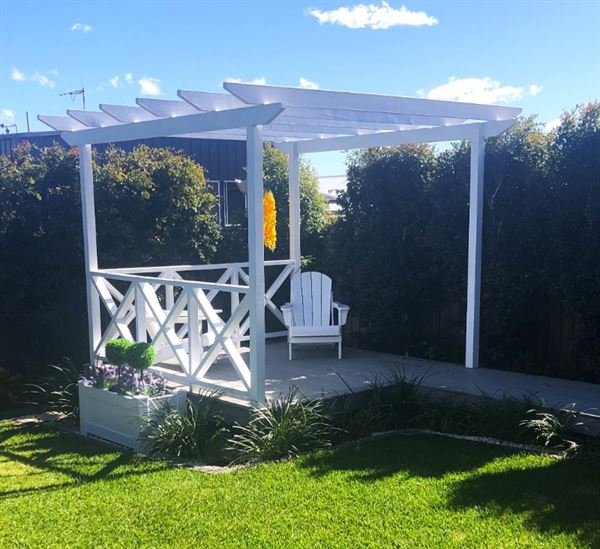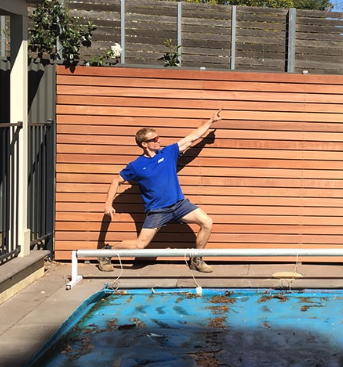Designing With Garden Plants: A Green Thumb's Guide
Posted by Lee Benson on 8th Jan 2025
For seasoned horticulturists and budding gardeners alike, planning and creating your garden design is sure to bring a mixture of delight and concern. Here in Australia, garden design really is an art form, where the options for a finished product are endless and the need to balance aesthetics with functionality is essential – namely for contending with our hot summer sun, torrential spring downpours, and all the other extreme weather conditions that are so typical for our climate.
When it comes to selecting plants and garden features, the endless opportunities can quickly become overwhelming. But with the right greenery and the perfect fencing, you can transform your outdoor space into a lush, vibrant haven that’s as practical as it is picturesque.
Today, we’re sharing our top tips for designing with garden plants that will thrive and enhance your home’s exterior—while making sure you’ve got the right fencing to bring everything together.
- Understand Your Space Before You Start Planting
- Mix Heights, Colours and Varieties for Year-Round Appeal
- Create Privacy With Strategic Planting
- Balance Functionality & Aesthetics Around Fences and Edges
- Design with the Elements in Mind
- Don’t Forget About Maintenance and Sustainability
- Enhance Your Garden’s Aesthetics with Stylish Fencing Solutions

1. Understand Your Space Before You Start Planting
Every garden, no matter the size, has its own unique characteristics. The first step in designing your dream garden is to understand your space in the hope that it will bring clarity to design tips.
Firstly, assess the layout (floorplan) of your garden. Is there an open area with grass where plants around the perimeter would look great? Are there steps that could be accompanied by planter boxes? Is the garden relatively symmetrical and would benefit from matching plant symmetry? Do you need a privacy screen, a decorative flower bed, or a functional herb garden? Understanding these factors will help you select plants that will thrive in your specific conditions. Australian natives are a great choice for our climate—they are drought-tolerant, low-maintenance and provide a natural, earthy look.
Next, assess the sunlight, soil type, and drainage in your yard. Consider whether your garden gets full sun, partial shade or deep shade, as this will directly influence which plants will flourish there.
2. Mix Heights, Colours and Varieties for Year-Round Appeal
One of the secrets to a stunning garden design is variety. By combining plants of different textures, sizes and colours, you can create a dynamic and visually interesting landscape.
Start with large, structural and statement plants like agaves or pampas grass for texture. These hardy plants serve as a strong base for your design, in which smaller and different-coloured plants can add complexity. Then, layer smaller shrubs, groundcovers or flowers that will add seasonal colour and softness. Popular choices in Australia include lavender, roses, and kangaroo paws (or any other Australian natives)—they bring both vibrancy and fragrance to your outdoor space.
For more colour variety throughout the year, consider planting perennials that bloom at different times. If you go for a vibrant bougainvillea, itcan take centre stage over summer. Then, if you incorporate some camellias or violet wattles, they will keep the colour flowing during winter. Adding different heights and structures can also make your garden more dynamic and eye-catching and look great styled against a natural-coloured fencing backdrop, like any of these Colorbond steel colours that have been specially designed to complement Aussie backyards and gardens.
3. Create Privacy With Strategic Planting
Fencing and privacy screens are a must-have in many Aussie gardens, but especially in the suburbs and inner city where neighbours are nearby. Your plants can complement your fencing by further enhancing privacy and aesthetics. For a natural, layered effect, consider planting tall, evergreen shrubs like lilly pillies or bottlebrushes near your boundary fence. These will act as natural screens and block out any unwanted views while also working as sound and wind insulators and providing shelter for local wildlife.
If your garden is a little more exposed, climbing vines or creepers, such as wisteria or jasmines, can be trained to grow along fences, creating a green wall that adds beauty and privacy. Just make sure to choose plants that suit your fence style and type. If you have a Colorbond fence, vines like star jasmine work well because they grow well in a variety of conditions, and their weight can be held by the Colorbond steel and won’t damage your fence.
4. Balance Functionality & Aesthetics Around Fences and Edges
Fences don’t have to be purely functional; they can also serve as a framework for your garden. If you have a fence that divides your garden from a neighbouring property, why not use the boundary to plant a row of native shrubs? Or, if you want to go big, a row of pencil pines will look fantastic and be very effective for privacy. They’ll not only enhance privacy but also create a green backdrop that visually links the elements of your garden.
Consider adding herb and veggie gardens along the edges of your fence. Herbs like rosemary, thyme, and oregano are hardy, low-maintenance and provide a lovely aroma while being easy to maintain. If you have a garden that gets lots of sun, a well-placed garden bed with basil, parsley and mint can create a productive, edible space near your kitchen or entertaining area and transform your garden into a functional landscaping space.
5. Design with the Elements in Mind
Water, sun and wind are three elements your garden will experience all year round, so it’s important to plan with these in mind, helping your garden plants work with their environment.
Water features can add an ounce of serenity to a garden, and carefully working plants into it is an essential part of integrating water into your design. Consider creating a small water feature or pond surrounded by lush, moisture-loving plants such as irises, water lilies, or papyrus. These plants thrive in wetter conditions and can add an elegant touch to your garden while keeping things low-maintenance.
If you have a pool, consider adding plants around the pool fencing to blend the metal into its natural surroundings. Alternatively, install a glass pool fence to allow the visuals of the garden to flow through the fence.
If you want to add texture near your fence or garden’s edge, consider ornamental grasses like blue fescue or Mexican feather grass. These plants will sway with the breeze, adding movement and a sense of calm to your garden. Finally, adding garden plants to areas that get a lot of sun is perfect, as it will support their growth long-term and keep indoor plants under shade like a patio
6. Don’t Forget About Maintenance and Sustainability
Designing a garden that’s both beautiful and sustainable is easy with plants that are native or drought-tolerant — this will mean they have reduced water consumption and ongoing maintenance. If you live in drier parts of the country, succulents, agapanthus, and grevilleas are great examples of plants that require minimal watering once established.
It’s also wise to plan your garden with an eye on long-term maintenance. For example, planting groundcovers around the base of shrubs or trees can help prevent weeds from sprouting, reducing the time you spend pulling out weeds.
Adding mulch around your plants is another simple but effective way to conserve moisture, control weeds, and maintain soil health. You can choose organic mulches like wood chips to create a natural look while reducing your garden’s water needs.
7. Enhance Your Garden’s Aesthetics with Stylish Fencing Solutions
While your plants will provide vibrant colours and textures, the right fence can tie everything together, creating a cohesive design. At Outback Fencing, we offer a range of fencing solutions that will complement your garden plants beautifully—from easy-to-maintain fences and robust and durable fence styles to wind-proof fences and everything in between.
For a modern and contemporary fencing design, Colorbond fencing is an excellent choice. Its clean lines and wide range of colours can blend seamlessly with both tropical and native plants, allowing your garden to shine. If you’re looking for something with a more rustic charm, aluminium slat fencing can bring warmth and character, providing the perfect backdrop for flowering vines and climbing plants.
If privacy is a concern, full privacy slat top fencing can not only create a secluded oasis but also act as a support for your climbing plants. With the right plants growing up, your fence will become part of the overall garden design rather than just a boundary.
Bringing It All Together
Creating a garden that’s both beautiful and functional takes planning and patience, but with the right plants and fencing solutions, the results will be worth it. Once you’ve assessed and understood your space, select a variety of plants and colours, create privacy, and consider the elements, sustainability and maintenance for a stunning garden design. Whether you’re looking for privacy, visual appeal or functional outdoor living space, the combination of carefully chosen plants and stylish fencing can elevate your garden to a level where you love living and hosting there.
Need advice on garden design, plant selection or the best fence for your yard? Get in touch with the experts at Outback Fencing today and let us help you create an outdoor space that’s both stunning and functional for years to come.


